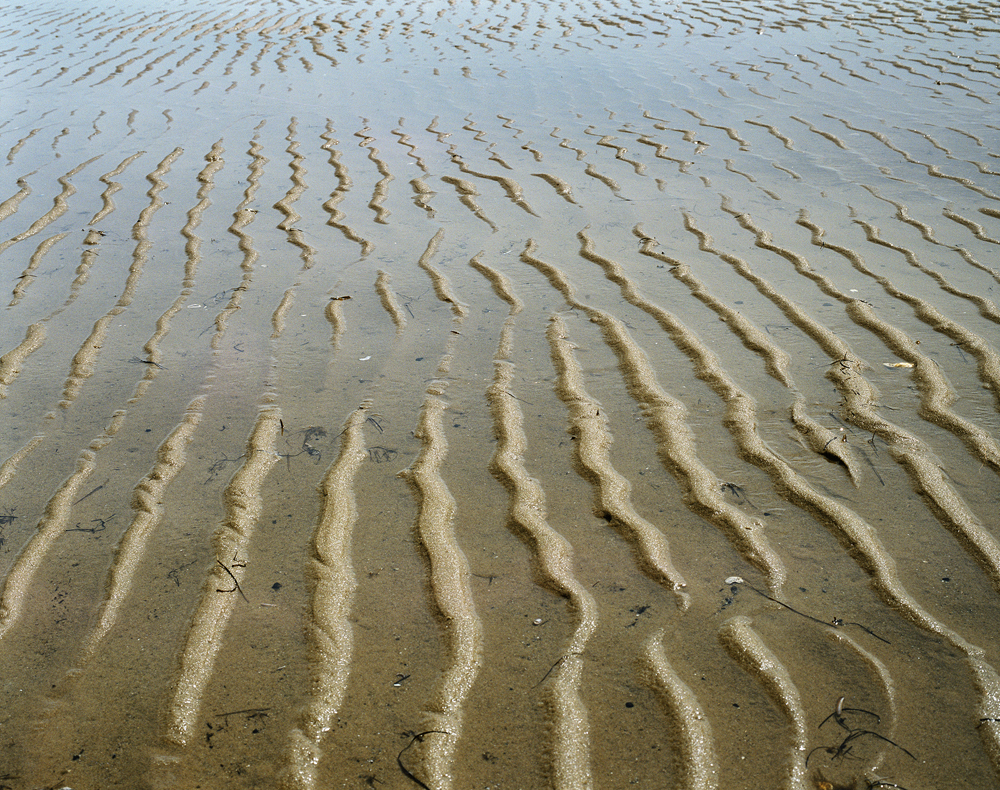Kathie Florsheim
Kathie Florsheim earned an M.F.A. in Photography from the Rhode Island School of Design (RISD), where she studied with icons Aaron Siskind and Harry Callahan. Honors include a residency at the Atlantic Center for the Arts, a Visual Art Sea Grant award given by the University of Rhode Island, and the Hannum-Warner Travel Fellowship awarded by her alma mater, Mt. Holyoke College. Her professional honors also include a fellowship with the Institutes for Journalism and Natural Resources, and a CASE Media Fellowship awarded by the University of Maine. Her photographs are in the permanent collections of the Fogg Museum at Harvard University, RISD Art Museum, The Museum of Art at Bates College, the Provincetown Art Association, Houston Museum of Fine Art, Center for Creative Photography in Tucson, AZ, and the Newport Art Museum, as well as numerous private collections.
Ms. Florsheim lives and works in Providence, RI. | www.kathieflorsheimphotography.com
Artist Statement
In the fall of 1972, all of us newly-minted first year grad students at Rhode Island School of Design came to class with examples of our work. Two years of crits began that day….with Aaron (Siskind) telling us to show our work to the class and to talk about it. When it was my turn, I told Aaron that if I wanted to talk about my work, I would be a writer. That was the beginning a wrestling match both with Aaron and with myself.
I make photographs because I don’t know how to do anything else. I sometimes rescue myself when the world around me is too much to cope with, by making images. I use the word Make,rather than Take, because I use a camera consciously, deliberately.
That distinction was pounded into me by my first photo instructor, years ago, and it stuck. As did the cactus spines that affixed themselves to my forehead the first time I used a light meter. I didn’t know how close to the subject I had to be to get a meter reading, so I moved to within inches of the plant. I had 5 or 6 hooked spines in my forehead before I knew what had happened. My instructor removed the spines with her tweezers. A tetanus shot followed, along with a lot of derisive laughter. I was famous for a few days. I never made the picture. The name of the plant was jumpin’ cactus.
All that is so many lifetimes ago, and by some miracle I continue to make work. I still wrestle with myself about how much to reveal about my process, I am superstitious about saying too much and then not having any reason to make the images. I also remember the many crits with Harry (Callahan), in which Harry would ask us, “How did you make that dumb picture, what dumb film did you use…” I learned from those crits that most of us haven’t the vaguest idea, although we profess to know, what we are doing and why. I couldn’t live without making things, and that’s probably as close to saying why I do what I do as anything else. Framing an image in the viewfinder makes the world more manageable. That process allows me to see the world by isolating space, to see small slices of life.
I work in series, and I take my original idea to its most logical end to see how far I can push it before I fall off a cliff. How far is too far, when does the object lose its identity to the point of becoming meaningless? A series allows, in fact encourages, that approach. I also spend long periods of time on most of the different series I do.
Music has an enormous influence on how I see. Thinking about rhythm, meter, and the like and integrating how those musical elements inform me the visually is daily fare. I played the piano for a number of years, unfortunately not as proficiently as I would have liked. But I learned a lot about pacing, shape and color from studying piano. One specific example: when I was working on the Somnambulations series, I was photographing through the colors of the music – jazz and fusion- I was listening to at that time, the color in the photographs reflected the color of the sound and its rhythm. When I started to photograph the On the Edge and Living on the Edge series, I was lost….because I couldn’t find any music that was a correlative of climate change. The cacophony on the ground was and is so disturbing that musical references seem inappropriate…probably because music has form and shape but the wreckage and ruin I see with climate change are random.
I’ve been photographing for 48 years, I intend to do so for the next 48 years…or until otherwise advised.
All photographs are © Kathie Florsheim












